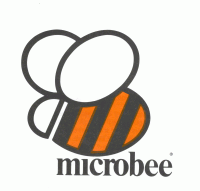|
Around 1978 Owen Hill teamed up with an electronic components company, Applied Technology of Hornsby (Sydney), to build a small computer he had designed.
Applied Technology had been previously producing kits in Australia for S-100 boards. The Microbee was released as a kit in 1982 on the cover of
Your Computer magazine, the manual was included free with the magazine. They were an immediate hit, being quite a powerful little system given the cost.
Applied Technology eventually changed their name to Microbee Systems, and sold ready-made versions. Their main market (especially for the 32) were
Australian schools, which had the Microbee recommended as the preferred system.
Over the years there has been several versions of the Microbee 32. The early ones (PLUS series) had monochrome display and clock rate at 2 Mhz.
Later ones (Color/IC series), from June 1983, included color display and 3.375 Mhz clock rate.
Different models:
- 32k Home built - 2mHz clock, Z80
- 32k IC (with EDASM) - 3.375 mHz clock. All later Z80 Microbees would run at this speed though many were over clocked up to 6 mHz.
- 32k Personal Communicator (with Basic, Telcom terminal program and Wordbee - a word processor in ROM)
- 32k PC85 (Word processor, Basic, Spreadsheet, Database in ROM) - the last of the line for ROM based machines - very neat and with built in networking.
The Microbee 32 was followed by Microbee 56, 64 and 128 models. There were all disk based systems using CP/M. The Microbee 128 was intended as a high-end
business system. There were also two really keen prototype systems, the Gamma and the Delta, which were intended to compete with the Amigas,
but problems within the company led to their cancellation not long before the company's collapse.
|





